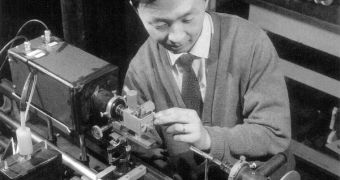After the recent announcement that the Nobel Prize for Medicine has gone to telomerase research, the Swedish Academy of Sciences has now announced its decision to award the Nobel Prize in Physics to three researchers who have dedicated their lives to learning how to harness the power of light for increasing humankind's ability to communicate. Charles Kao, Willard Boyle and George Smith are the scientists who will share this year's prize. Kao will get half of the award, with each of the other two receiving a quarter each, the BBC News reports.
Charles Kao is largely credited for his amazing contribution to the field of fiber optics, the little, transparent wires that are able to carry information between two terminals (laptops, desktops, etc.) as light. His innovative work has helped develop outstanding communication grids, enabling friends and family members to stay in contact with each other almost instantly, while on the other side of the planet. For “groundbreaking achievements concerning the transmission of light in fibers for optical communication,” he is awarded half of this year's Nobel Prize in Physics, the Academy says.
North American scientists Willard Boyle (expert in applied physics) and George Smith (physicist) get a quarter of the award each, for their remarkable contributions to the invention of the charged coupled device, or CCD, the light-detecting sensor that lies at the heart of every digital camera. These sensors, in their most advanced forms, also fly into space aboard space probes, orbiters, landers, and, most importantly, telescopes, increasing our knowledge of the Universe around us. The scientists made their discovery at the Bell Laboratories, in Murray Hill, New Jersey.
Together, the three scientists have contributed extraordinarily to the development of our species. Keeping in touch with each other is the most sought-after capability at this point, as evidenced by the success that social-networking websites have. On the other hand, being able to photograph galaxies millions and billions of light-years away, in the way Hubble does with its advanced CCD, is also a remarkable feat. By splitting the award, the Swedish Academy of Sciences has managed to reward the three researchers with what is considered the most prestigious science prize in the world.

 14 DAY TRIAL //
14 DAY TRIAL //